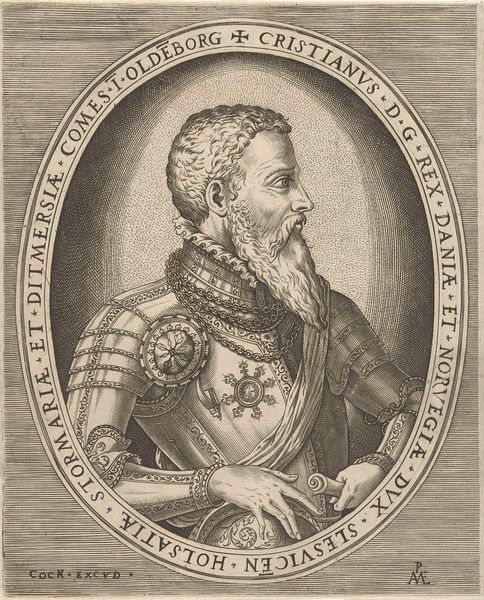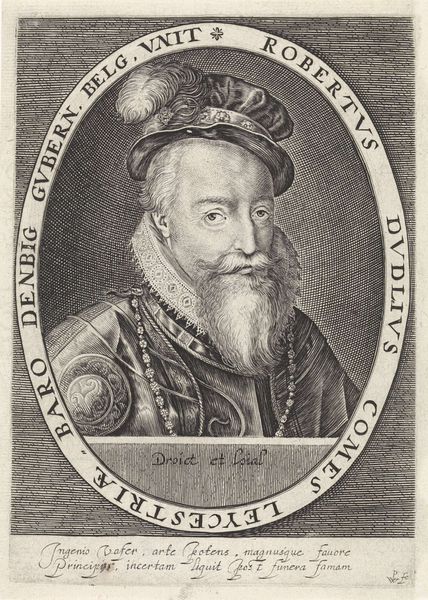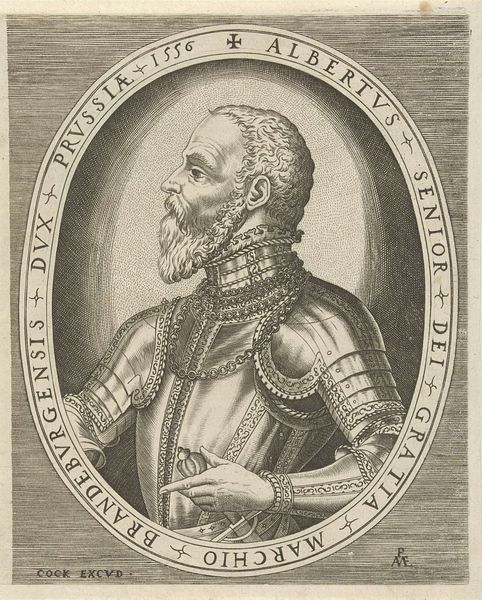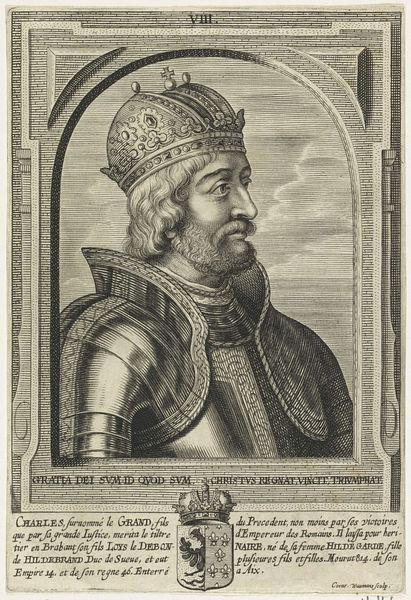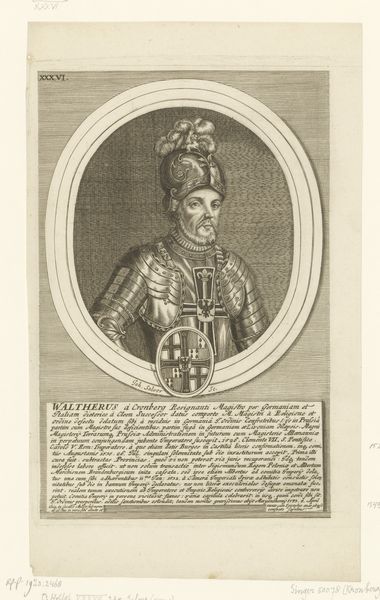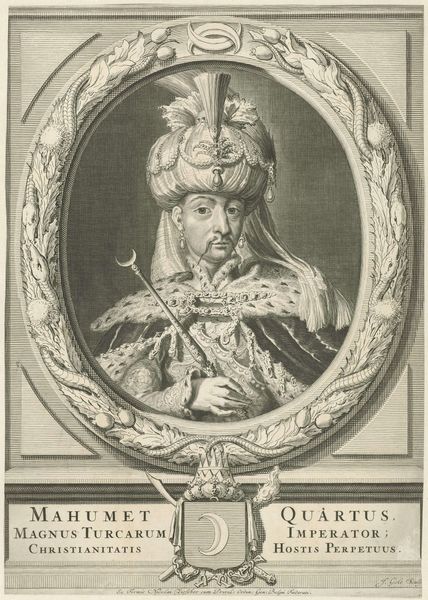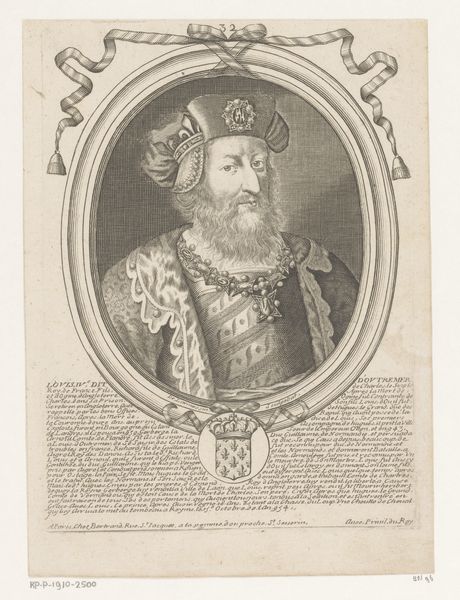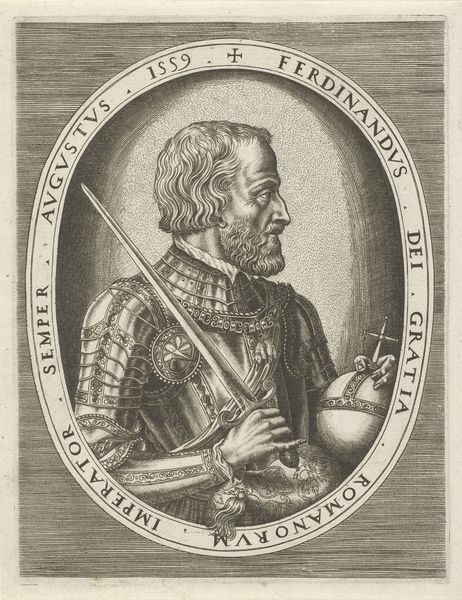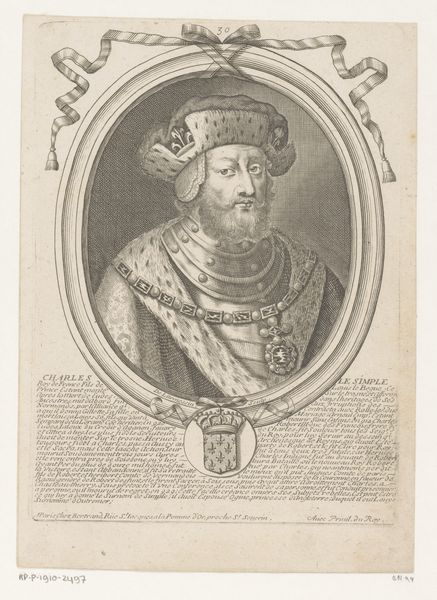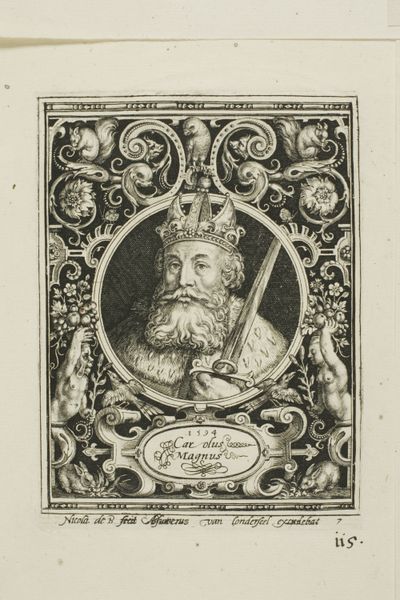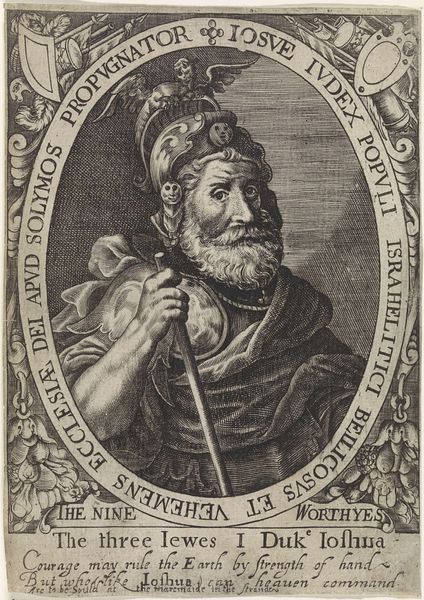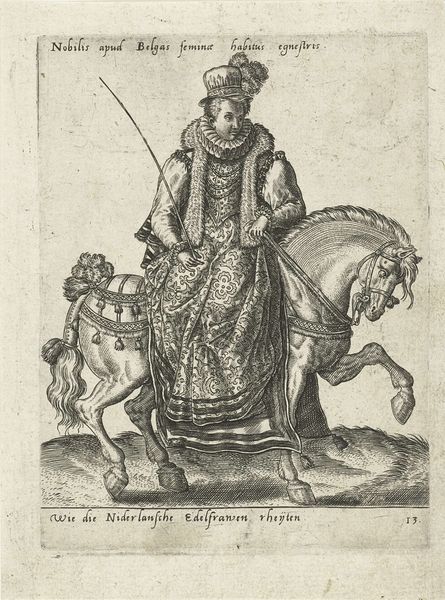
metal, engraving
#
portrait
#
pencil drawn
#
baroque
#
metal
#
pencil sketch
#
old engraving style
#
portrait drawing
#
history-painting
#
engraving
Dimensions: height 232 mm, width 173 mm
Copyright: Rijks Museum: Open Domain
Cesare Laurentio’s print portrays Ákos Barcsay, Prince of Transylvania. He is adorned in armor and headwear, holding a scepter in his right hand, symbols of power and authority. The scepter, in particular, is a powerful object, appearing throughout ancient Egyptian, Roman, and medieval Christian art as a symbol of divine and earthly rule. Consider the ancient Egyptian pharaohs, who were often depicted holding a scepter as a sign of their divine right to govern. Now, centuries later, we see Barcsay with a scepter, a powerful visual echo of leadership. But how has this symbol changed? In the Middle Ages, the scepter was often topped with a cross, Christianizing its power. Here, the scepter evokes a sense of control, yet it carries a psychological weight—a collective memory of leaders past and present. The image taps into our deep, subconscious understanding of power, influencing how we perceive authority. This visual language transcends time, resurfacing in new contexts.
Comments
No comments
Be the first to comment and join the conversation on the ultimate creative platform.
